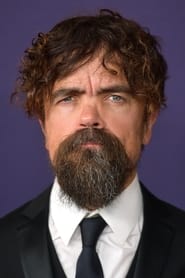
Ask Your Own Question
What is the plot?
In "Creating The Battle Of Blackwater Bay," the episode begins with a behind-the-scenes look at the preparation for one of the most significant battles in "Game of Thrones." The production team discusses the scale and complexity of the Battle of Blackwater Bay, emphasizing the need for meticulous planning and coordination. The episode features interviews with key cast and crew members, including showrunners David Benioff and D.B. Weiss, as well as director Neil Marshall, who shares his vision for the battle.
The episode transitions to the story's context, highlighting the political tensions leading up to the battle. Stannis Baratheon, seeking to claim the Iron Throne, prepares to attack King's Landing with his fleet. The crew explains the importance of this moment in the series, showcasing the stakes involved for characters like Tyrion Lannister, who is tasked with defending the city.
As the narrative unfolds, the episode delves into the logistics of creating the battle scene. The production team discusses the challenges of filming on location, including the use of green screens and practical effects. They highlight the need for a large cast of extras to portray soldiers, as well as the intricate choreography required for the battle sequences. The crew emphasizes the importance of realism, aiming to create a visceral experience for the audience.
The episode then shifts focus to the character motivations driving the battle. Tyrion Lannister, portrayed by Peter Dinklage, is shown strategizing with his allies, including Bronn and the city's defenders. The tension in Tyrion's character is palpable as he grapples with the weight of responsibility and the fear of failure. The crew discusses how Tyrion's cleverness and resourcefulness are crucial to the defense of King's Landing.
Next, the episode showcases the preparation of Stannis Baratheon's forces, led by actor Stephen Dillane. The crew highlights the visual design of Stannis's army, including their armor and banners, which symbolize his claim to the throne. The episode captures the determination of Stannis and his men as they prepare for the assault, emphasizing their belief in their cause.
As the battle approaches, the episode features a detailed breakdown of the special effects used to create the chaos of war. The crew explains the use of pyrotechnics to simulate fire and explosions, particularly the infamous wildfire that plays a pivotal role in the battle. The visual effects team discusses the challenges of making the scenes both thrilling and believable, ensuring that the audience feels the intensity of the conflict.
The episode culminates in a discussion of the climactic moments of the battle. The crew reveals how they filmed the scenes of the ships clashing in the bay, the chaos of the fighting on the streets of King's Landing, and the emotional stakes for characters like Tyrion and Sansa Stark. The tension builds as the defenders face overwhelming odds, and the crew emphasizes the importance of character-driven moments amidst the action.
Finally, the episode concludes with reflections from the cast and crew on the impact of the Battle of Blackwater Bay on the series as a whole. They discuss the significance of the battle in shaping the characters' arcs and the broader narrative of "Game of Thrones." The episode ends with a sense of accomplishment from the production team, who successfully brought this monumental battle to life, leaving a lasting impression on the audience.
What is the ending?
In the episode "Creating The Battle Of Blackwater Bay," the focus is on the behind-the-scenes efforts that brought the epic battle to life. The episode concludes with a reflection on the intense preparation and the emotional stakes involved in the battle, showcasing the dedication of the cast and crew. The battle itself is a pivotal moment in the series, highlighting the themes of power, survival, and sacrifice.
As the episode unfolds, it begins with the crew discussing the significance of the Battle of Blackwater Bay, a crucial turning point in the War of the Five Kings. The production team shares insights into the challenges they faced in creating the battle, emphasizing the scale and complexity of the scenes.
The first scene highlights the initial planning stages, where the director and visual effects team brainstorm ideas to depict the chaos of battle. They discuss the importance of realism and the need to convey the emotional weight of the conflict. The crew members express their excitement and anxiety about bringing such a monumental scene to life.
Next, the episode transitions to the set, where the actors prepare for their roles. The tension is palpable as they don their armor and weapons, embodying their characters' motivations and fears. The actors share their thoughts on the battle, revealing their characters' stakes in the conflict. For example, Tyrion Lannister, portrayed by Peter Dinklage, is determined to prove himself as a capable leader, while Stannis Baratheon, played by Stephen Dillane, is driven by his desire for the Iron Throne.
As the filming of the battle begins, the crew showcases the elaborate set design, including the massive ships and the detailed backdrop of King's Landing. The use of practical effects, such as fire and explosions, adds to the authenticity of the scenes. The episode captures the chaos of the battle, with actors performing intense fight sequences and the crew coordinating the intricate choreography.
Throughout the filming, the emotional stakes are highlighted. The actors discuss the fear and desperation their characters feel as they face overwhelming odds. The episode emphasizes the camaraderie among the cast and crew, as they work together to create a memorable and impactful sequence.
In the final scenes, the episode reflects on the aftermath of the battle. The crew discusses the significance of the victory for the Lannisters and the implications for the ongoing war. The emotional toll on the characters is evident, as they grapple with loss and the harsh realities of war.
The episode concludes with a sense of accomplishment among the cast and crew, who have successfully brought the Battle of Blackwater Bay to life. The dedication and hard work of everyone involved are celebrated, leaving viewers with a deeper appreciation for the artistry behind the scenes of Game of Thrones.
Is there a post-credit scene?
The episode "Creating The Battle Of Blackwater Bay" from the "Game of Thrones" specials does not contain a post-credit scene. Instead, it focuses on the behind-the-scenes aspects of the production, particularly the intricate planning and execution of the Battle of Blackwater Bay. The episode delves into the creative processes, the challenges faced by the cast and crew, and the visual effects that brought this pivotal battle to life. It features interviews with key figures such as showrunners David Benioff and D.B. Weiss, as well as insights from the director and various department heads, highlighting the collaborative effort that went into creating one of the most memorable sequences in the series.
What strategies did Tyrion Lannister employ during the Battle of Blackwater Bay?
Tyrion Lannister, serving as Hand of the King, devised a multi-faceted strategy to defend King's Landing against Stannis Baratheon's forces. He utilized wildfire, a highly volatile substance, to create a massive explosion that decimated Stannis's fleet as they approached the city. Tyrion also coordinated the defense with the city's forces, positioning them strategically along the walls and ensuring they were prepared for the assault.
How did Stannis Baratheon react to the unexpected use of wildfire?
Stannis Baratheon, a man of strong conviction and military discipline, was initially taken aback by the sudden and devastating explosion caused by the wildfire. His confidence wavered as he witnessed the destruction of his fleet and the chaos it caused among his troops. This unexpected turn of events forced him to reassess his strategy and ultimately led to a more desperate and aggressive approach in the battle.
What role did the character Davos Seaworth play during the battle?
Davos Seaworth, known as the Onion Knight, played a crucial role during the Battle of Blackwater Bay as Stannis's loyal advisor. He attempted to persuade Stannis to reconsider the attack after witnessing the destruction caused by the wildfire. Davos's internal conflict was palpable as he struggled between his loyalty to Stannis and his growing concern for the lives of the men fighting in the battle.
How did the character Sansa Stark's perspective on the battle influence her actions?
Sansa Stark, trapped in King's Landing, experienced a mix of fear and hope during the Battle of Blackwater Bay. As she watched the chaos unfold from her vantage point, her internal turmoil deepened. She felt a sense of helplessness but also a flicker of hope that the battle might lead to a change in her dire circumstances. This emotional state influenced her interactions with other characters, as she sought comfort and reassurance amidst the turmoil.
What was the significance of the character Sandor Clegane's actions during the battle?
Sandor Clegane, known as the Hound, displayed a complex mix of brutality and unexpected protectiveness during the Battle of Blackwater Bay. As the battle raged on, he fought fiercely but also showed a reluctant sense of duty to protect Sansa Stark. His actions highlighted his internal conflict between his violent nature and a deeper, albeit buried, sense of honor, particularly in relation to Sansa.
Is this family friendly?
"Creating The Battle Of Blackwater Bay" is a behind-the-scenes special that delves into the making of one of the most significant battles in "Game of Thrones." While it primarily focuses on the production aspects, there are elements that may be objectionable or upsetting for children or sensitive viewers.
-
Violence and Warfare: The special discusses the battle's choreography and visual effects, which may include depictions of violence, blood, and the chaos of war.
-
Death and Destruction: There are references to the consequences of battle, including the loss of life and the emotional toll it takes on characters, which may be distressing.
-
Emotional Strain: The cast and crew may share their experiences and feelings about portraying intense and tragic moments, which could evoke strong emotions.
-
Mature Themes: Discussions may touch on themes of power, betrayal, and the moral complexities of war, which might be challenging for younger audiences to fully grasp.
Overall, while the special is informative and focuses on the creative process, it does contain elements that could be unsettling for children or sensitive viewers.
























